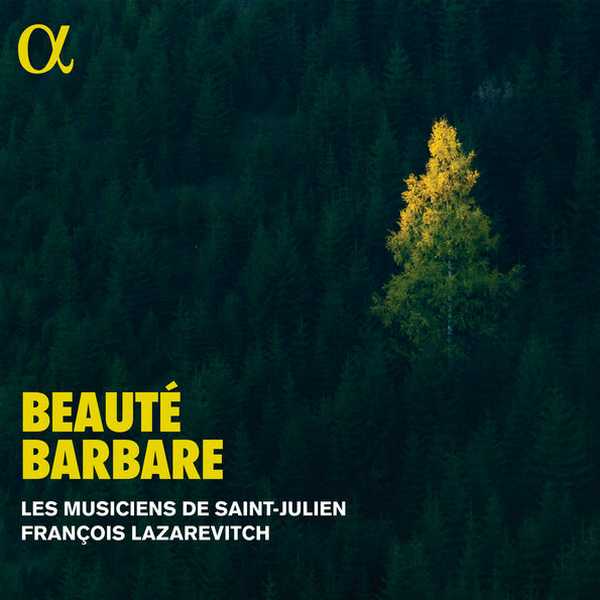

Composer: Georg Philipp Telemann
Performer: Les Musiciens de Saint-Julien
Conductor: François Lazarevitch
Format: FLAC (tracks)
Label: Alpha
Catalogue: ALPHA949
Release: 2023
Size: 2.12 GB
Recovery: +3%
Scan: нув
01. anon.: Pozic mamo roz
02. anon.: Światówka
anon.: Suite from Uhrovska’s manuscript
03. Hungaricus – Hajdukujymy – Hungaricus
Telemann: Ouverture-Suite in B-Flat Major, TWV 55:B5
04. V. Les Moscovites
Telemann: Ouverture-Suite in D Major, TWV 55:D17
05. II. Les Janissaires
Telemann: Ouverture-Suite In B-Flat Major, TWV 55:B8
06. VIII. Mezzetin
Telemann: Ouverture-Suite in E Major, TWV 55:E2
07. V. Rondeau Hanaquoise
08. anon.: Dyž sem šla z kostela
Telemann: Flute Concerto in D major, TWV 51:D2
09. I. Moderato
10. II. Allegro
11. III. Largo
12. IV. Vivace
13. anon.: Nisko słonko
Telemann: Trio No. 3 in B Minor, TWV 42:H2
14. VI. Allegro
15. anon.: Hora din caval
Telemann: Concerto polonoise in D Major, TWV 51:D3
16. III. Adagio
Telemann: Trio No. 3 in B Minor, TWV 42:H2
17. V. Presto
18. anon.: Takú sem já galánečku dostal
anon.: Dances suite from Uhrovska’s manuscript
19. [Untitled] – Olacs – [Untitled] – [Untitled] – [Untitled]
Telemann: The Rostock Manuscript, TWV 45
20. Hanac – Hanac
Telemann: Ouverture-Suite in E Major, TWV 55:E1
21. X. Hanasky
anon.: The Rostock Manuscript, TWV 45
22. Vitement – Braul Oltenesc
23. anon.: Vešelo še dzivče
Telemann: The Rostock Manuscript, TWV 45
24. Polonie – Polonie
anon.: Suite from Uhrovska’s manuscript
25. [Untitled] – Hungaricus – Hungaricus – [Untitled] – Olas
This album owes its title ‘Beauté barbare’ to Telemann who described the music he discovered during a trip to Upper Silesia in 1705 as existing ‘in its true barbaric beauty’. Did he mean ‘wild’? ‘Exotic’? In any case, the composer was fascinated: ‘An attentive observer could gather from [those musicians] enough ideas in eight days to last a lifetime.’ An equally passionate admirer of folk music, whose Serbian roots link him to these cultures, François Lazarevitch has conceived this wildly swirling programme that mixes Telemann (Concerto Polonois) and eastern European Romani music of the eighteenth century, thanks to a collection of dance tunes from 1730 that he has unearthed. ‘What is interesting for us as Baroque performers is to try to find in the pieces of “art music” everything that is not written down, namely the energy and “swing” of the folk dances. I like the music we play not to sound like early music’, says the flautist and founder of Les Musiciens de Saint-Julien, who are joined for the occasion by a cymbalom virtuoso and a wide variety of percussion instruments.